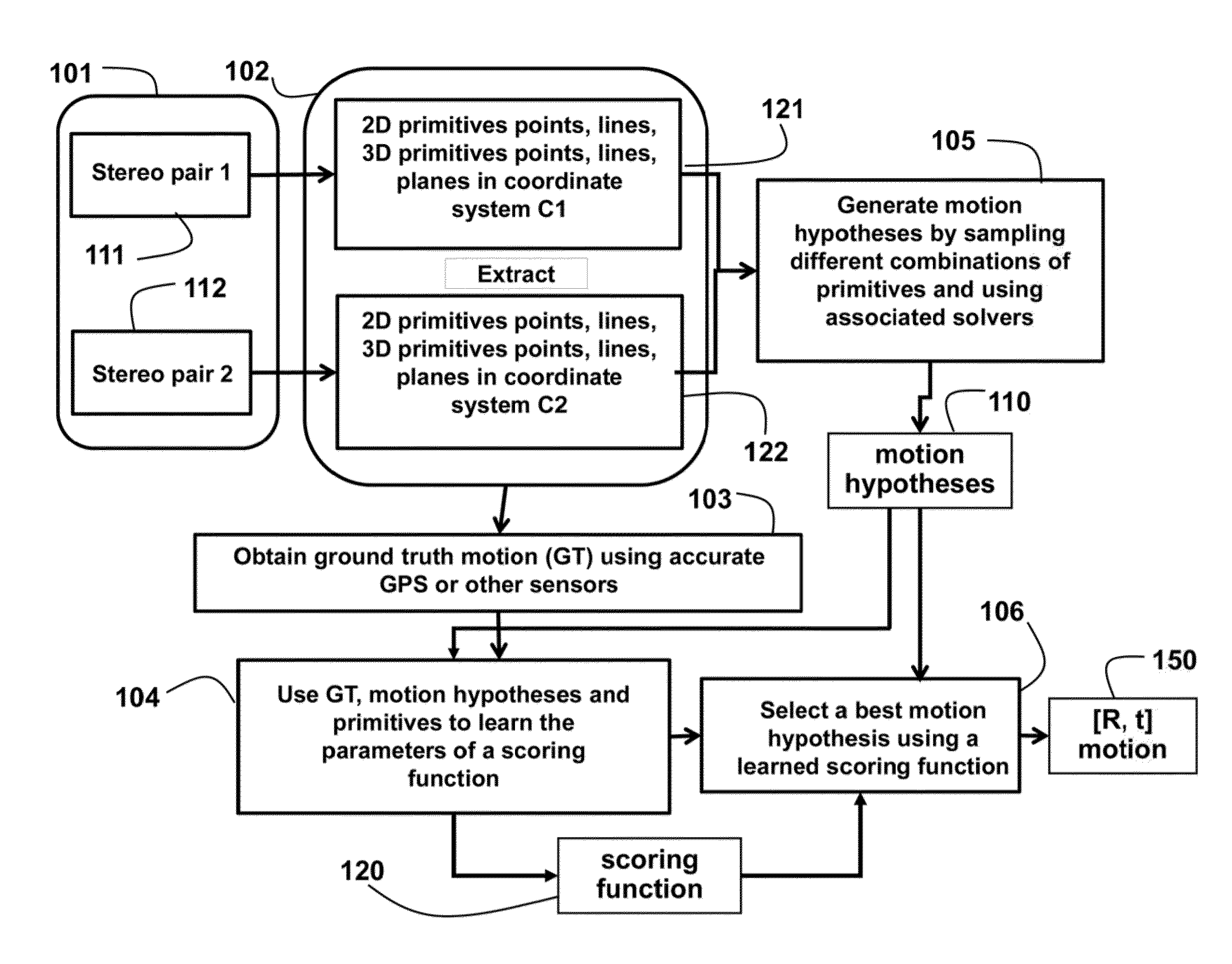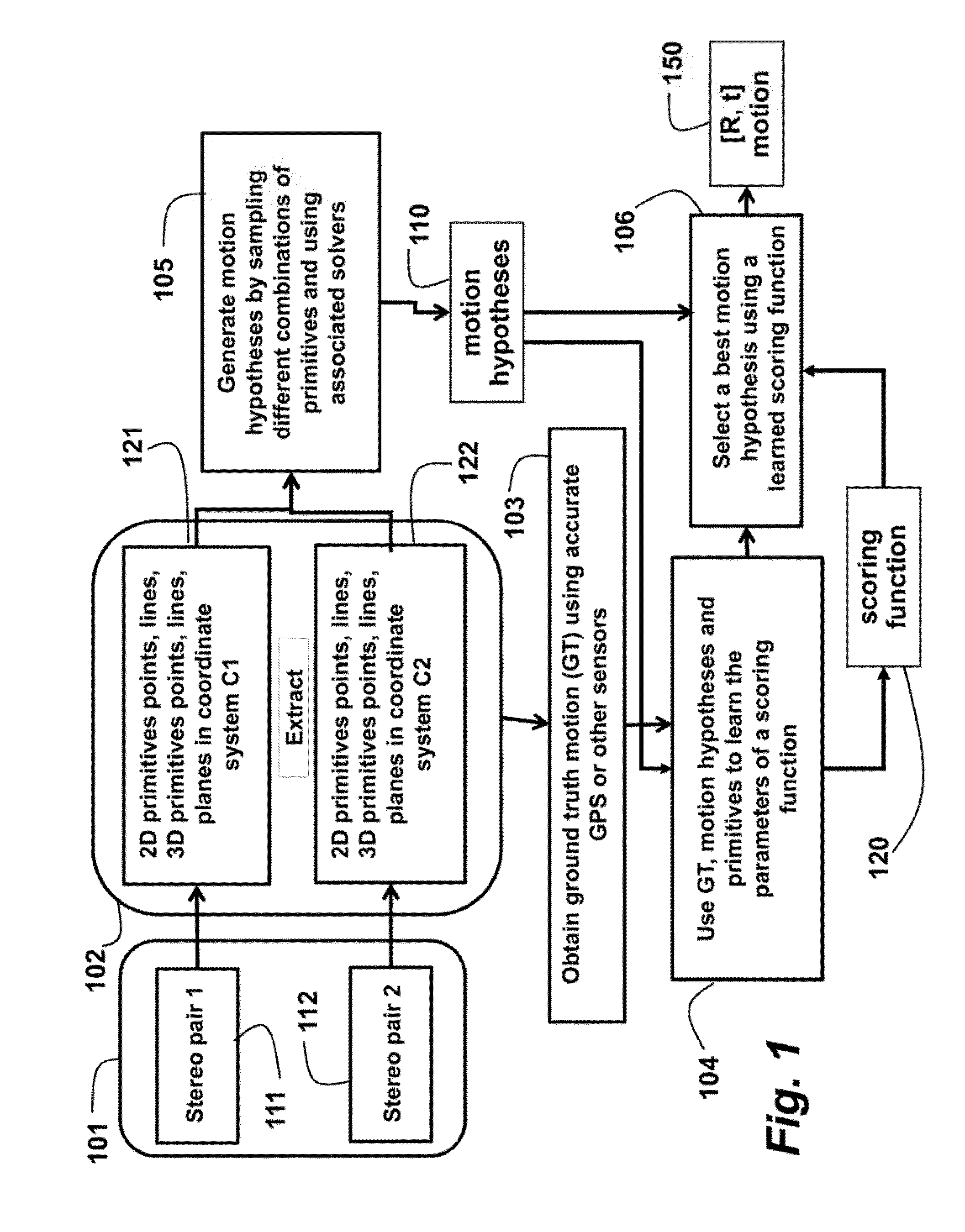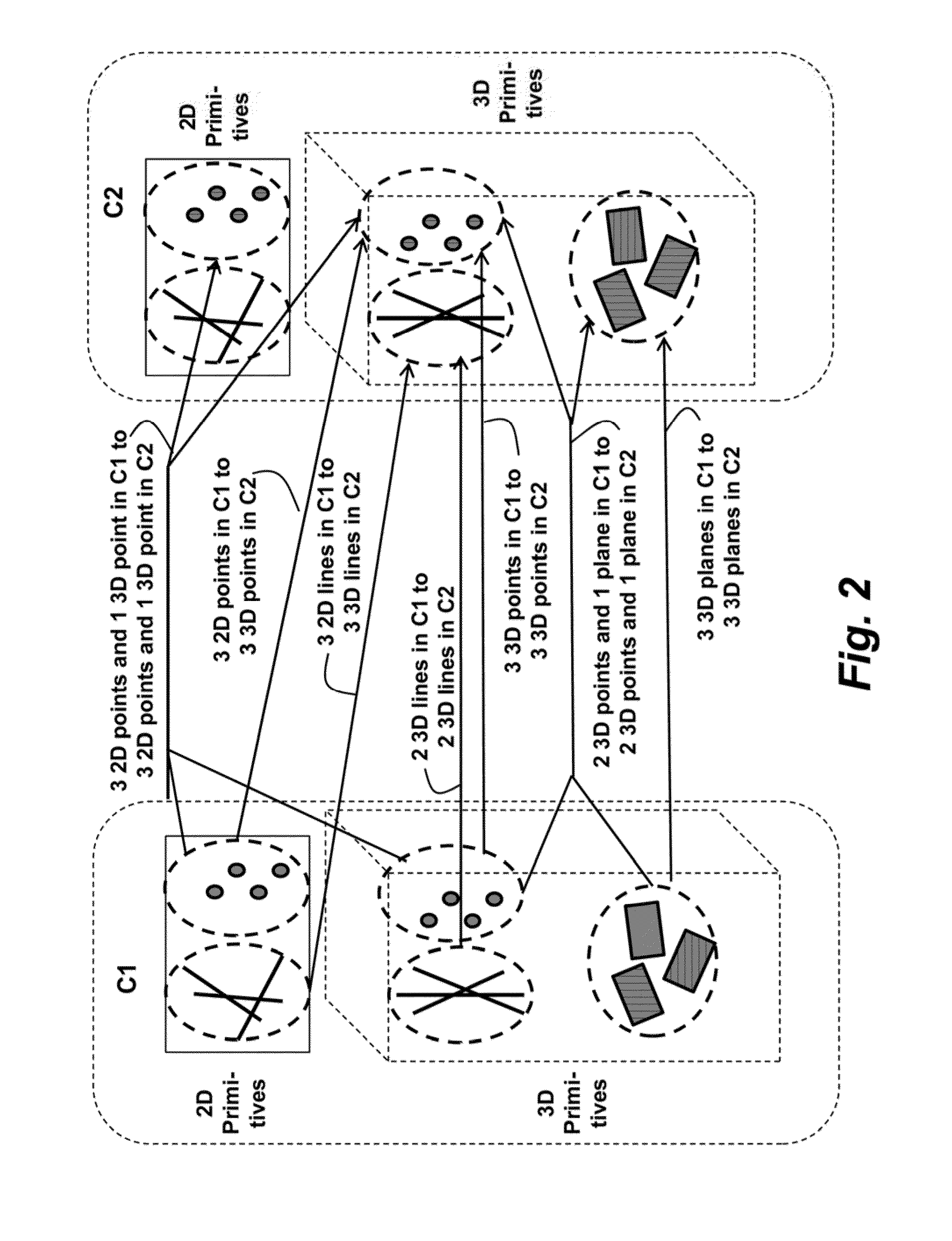Method for stereo visual odometry using points, lines and planes
a visual odometer and point technology, applied in the field of computer vision, can solve problems such as difficult to extend existing cases
- Summary
- Abstract
- Description
- Claims
- Application Information
AI Technical Summary
Problems solved by technology
Method used
Image
Examples
Embodiment Construction
[0012]As shown in FIG. 1, the embodiments of the invention provide a method for estimating motion. Input 101 to the method is two pairs 111 and 112 of stereo images (Left1, Right1) and (Left2 Right2) in two coordinate systems C1 and C2 respectively. Each stereo image can be acquired by a pair of red, green and blue (RGB) cameras calibrated with each other. The embodiments of the invention, determine rotational and translational motion (R,t) 150 between C1 and C2 using the two pairs of stereo images.
[0013]It is noted that the images can also be acquired by an RGBD sensor. Hence, generally the images can be considered three-dimensional (3D) images, which can either be represented by a stereo pair or a single RGBD image. It is also possible to use more than two cameras, e.g., a trinocular stereo camera, to increase the accuracy of the depth information.
[0014]For each of the four images in two stereo pairs of images or 3D images, 2D points and 2D lines are extracted 102, From the first ...
PUM
 Login to View More
Login to View More Abstract
Description
Claims
Application Information
 Login to View More
Login to View More - R&D
- Intellectual Property
- Life Sciences
- Materials
- Tech Scout
- Unparalleled Data Quality
- Higher Quality Content
- 60% Fewer Hallucinations
Browse by: Latest US Patents, China's latest patents, Technical Efficacy Thesaurus, Application Domain, Technology Topic, Popular Technical Reports.
© 2025 PatSnap. All rights reserved.Legal|Privacy policy|Modern Slavery Act Transparency Statement|Sitemap|About US| Contact US: help@patsnap.com



